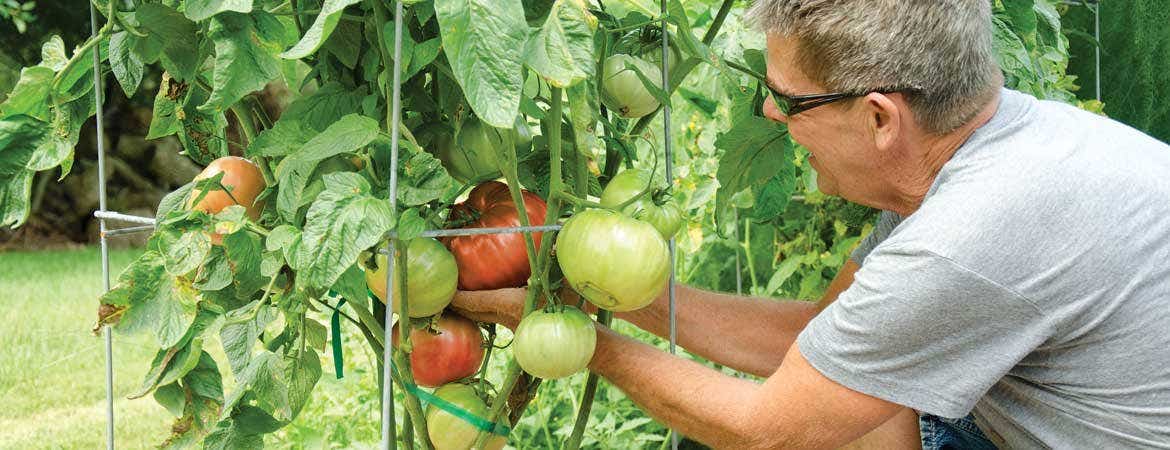Summer Tomato Care Guide


It's no wonder that it's so common to find tomatoes growing in almost every vegetable garden. Who can resist the juicy, flavorful taste of a homegrown tomato? Let this be the year that you produce your largest, most bountiful harvest ever! We have just the tips you need to keep your tomato plants thriving all summer long.
Give Your Tomatoes the Support They Need
Keep your fruit clean and off the ground while reducing the chance of rot and slug damage with good plant supports. Tomato cages and staking systems also allow you to grow more tomatoes in a smaller space, provide better sun exposure, and make harvesting easier with less bending and kneeling.


Water Your Plants Regularly
For tomatoes, it's really important to water consistently and thoroughly soak the roots. When the soil gets too dry, that's when you run into issues such as blossom end rot. Tomatoes also need water to pick up calcium from the soil. Be sure to give your plants about 2 inches of water per week through the summer.
There are several different options for watering. You can use a hose, wand, or watering can to direct water exactly where you want it. A soaker hose or drip irrigation system evenly and sufficiently waters your plants while reducing overall water usage. This also keeps the leaves dry by only watering the base of the plant, reducing chances of fungal infection. For low-maintenance watering, use a timer with your watering system and let it do the work for you!
It's also important to take into consideration the time of day you're watering. If you water in late afternoon or evening and the foliage gets wet, it's less likely to evaporate, which could lead to blossom end rot. If you do water later in the day, just be sure to water only the soil at the base of the plants and avoid water splashing the foliage.


Fertilize Once Plants are Well-Established
Your plants are putting out a lot of effort to grow strong and tall, and to produce big, juicy tomatoes. Give those hungry plants a little help by adding fertilizer. Once you start to see tomatoes form, add fertilizer around the base of the plant. This can usually be repeated around every 2-3 weeks, but read the fertilizer instructions to know for sure. As another option, you can also use liquid fertilizer to fertilize your tomato plants every time you water.


Don't Forget to Trim and Prune!
Tomato plants can get something known as “suckers” between the central stem and its branches. Suckers can drain energy from the rest of the plant and make your plant top-heavy if they bear fruit. Some gardeners pinch and remove suckers which can lead to fewer, but larger tomatoes. If you'd rather go for quantity rather than size of the fruit, don't remove the suckers, but make sure you have adequate support for the extra fruit.
The bottom leaves of a tomato plant are susceptible to soil splash so it helps to keep this area foliage-free. Trim the bottom 6-8 inches of the tomato plant to help reduce the chances of tomato blight. If you notice any yellow, dying leaves towards the bottom of the plant, remove these to help reduce the spread of diesease.


Protect Your Plants from Pests and Disease
Don't let hungry insects and animals or fungal diseases wreak havoc on your hard work! We have a number of solutions to keep the pests at bay. For more help on specific problems and solutions, send our Product Support team an email and we'll find just what you need!

